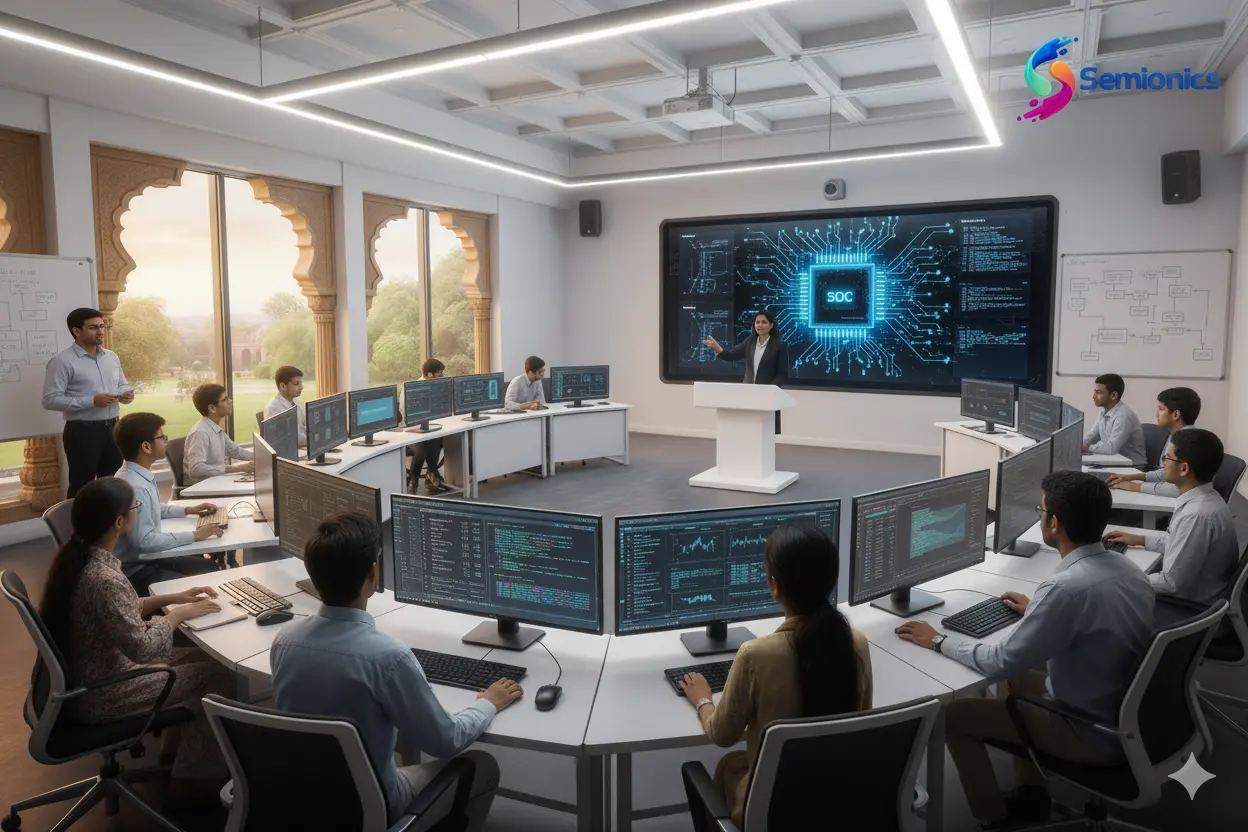

The semiconductor industry is central to modern technology. AI, 5G, and autonomous vehicles all rely on it. Consequently, there is immense demand for highly specialized talent: the VLSI expert. These professionals are the architects who design the integrated circuits (ICs) for every digital device. The VLSI domain is where electrical engineering meets computer science. Specifically, it combines deep theoretical knowledge with mastery of complex Electronic Design Automation (EDA) tools. For engineers seeking a challenging and rewarding career, the VLSI field offers an exceptional path.
Engineers become true VLSI experts by mastering advanced technology nodes, such as 7nm or 3nm. Therefore, simply accumulating years isn’t enough. This transition demands specialization in one of three critical pillars of the design flow:
The expert here models complex system-on-chip (SoC) architectures in HDL. They ensure the logic is optimized for timing, power, and area. This occurs before the design hits the physical layout.
Verification engineers achieve expertise by developing robust, reusable test environments. For instance, they use the Universal Verification Methodology (UVM) to catch elusive, high-cost bugs. Moreover, with increasing complexity, skills in Formal Verification and AI-driven methods are essential.
This is where the digital blueprint meets reality. A true VLSI expert in physical design is skilled in Static Timing Analysis (STA) and clock tree synthesis (CTS). Subsequently, they optimize the power grid. They must fix all timing violations to prepare the chip for error-free fabrication.
Two major industry trends are currently increasing the need for highly skilled VLSI professionals.
Every new chip must be more power-efficient than the last. This includes everything from phone processors to data center accelerators. Thus, VLSI experts must use advanced techniques. These include Dynamic Voltage and Frequency Scaling (DVFS) and clock gating. Because of this focus, low-power design is now a core specialty.
Moore’s Law is slowing down. Consequently, innovation has shifted to advanced packaging. The industry is moving towards Chiplet architectures and 3D Integrated Circuits (3D-IC). This involves stacking functional components like CPUs and memory vertically. However, this introduces new challenges in thermal management and signal integrity. Therefore, this creates a high-demand niche for the next generation of VLSI professionals.
The compensation for VLSI roles is among the strongest in engineering. While a new graduate starts with a good salary, the earning potential for a senior-level VLSI expert increases sharply. Achieving roles like Physical Design Lead or Verification Architect demands more than tool proficiency. It requires deep knowledge and the ability to solve unprecedented problems on advanced process nodes. Therefore, for those who commit to continuous learning, the professional rewards are immense
At Semionics, we provide hands-on training, industry exposure, and mentorship for engineers aspiring to enter analog VLSI jobs. Our programs cover design, layout, EDA methodologies, and verification.
📞 Contact: +91-8904212868
🌐 Website: www.semionics.com
📚 LMS / Online Learning Platform: academy.semionics.com
🔗 LinkedIn Page: Follow Us
💬 WhatsApp Group: Join Now
🎥 YouTube Channel: Subscribe
📧 Email: enquiry@semionics.com